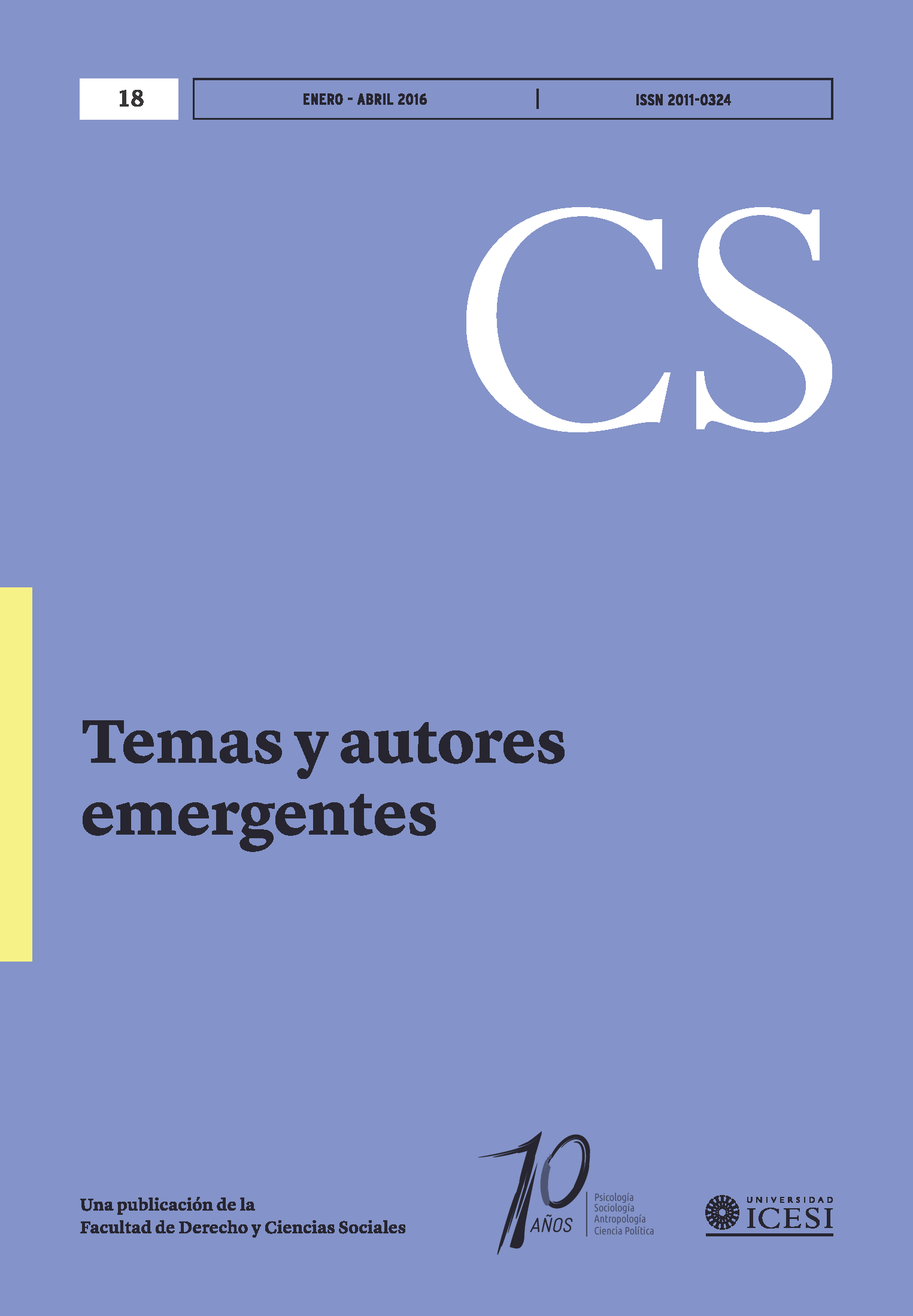Literary consumption in indigenous languages: revitalization experiences from Southern Mexico
DOI:
https://doi.org/10.18046/recs.i18.2053Keywords:
Language revitalization, Literacy, Literary consumption, Literature in indigenous languagesAbstract
This article analyzes, from several ethnographic experiences in Southern Mexico, the way in which agents for language revitalization design the programs or projects of literacy in indigenous languages. From the field of revitalization, promotion of literacy is a prerequisite for the production and consumption of literature in these languages. Mainly, this article discusses the production of literary goods from the reading skills of potential consumers. In addition, it interrogates how literacy is imagined as an education process that at the end does not result in the training of readers.Downloads
References
Agudo, A. (1984). La promoción de la lectura como animación cultural. Parapara, (9), 25-37.
Alimi, M. (2015). Micro language planning and cultural renaissance in Botswana. Language Policy, Febrero, 1-21.
Avilés, T. y Rojas, D. (2014). Argumentación y estandarización lingüística: creencias normativas en el Diccionario de chilenismos (1875) de Zorobabel Rodríguez. Revista Signos. Estudios de Lingüística, (85), 142-163.
Barandiaran, X. (2003). Activismo digital y telemático. Poder y contrapoder en el ciberespacio, Versión 1(1). http://sindominio.net/~xabier/textos/adt/adt.html
Bourdieu, P. (1987). Los Tres Estados del Capital Cultural. Sociológica, 2(5), 11-17.
Calagnon, N. y Ces ín E. E. (2008). Nosotros y los otros: comercio exterior de bienes culturales en América del Sur. Buenos Aires: Secretaría de Cultura de la Presidencia de la Nación.
Córdova, L. (2009). "Ideologías lingüísticas de una comunidad de habla chuj en la zona fornteriza del estado de Chiapas", Tesis de maestría. Centro de Investigaciones y Estudios Superiores en Antropología Social, México.
Cragnolino, E. y Lorenzatti, M. C. (2013). Jóvenes, familias y procesos de literacidad. Cuadernos CEDES, 33(90), 197-214.
Cru, J. (2015). Language revitalisation from the ground up: promoting Yucatec Maya on Facebook. Journal of Multilingual and Multicultural Development, 36(3), 284-296.
Durán, S. (2013). Estrategias para la enseñanza de lenguas moribundas por maestros con poco dominio de ellas. Científica, 1(2), 155-169.
Ferreiro, Emilia (2012)[1989]. Introducción. En Ferreiro, E. (coord.) Los hijos del analfabetismo. Propuestas para la alfabetización escolar en América Latina (pp. 9-15). México: Siglo XXI.
Flores, J. A. y Córdova, L. (2012). Guía de revitalización lingüística: para una gestión formada e informada. México: CIESAS/Conacyt/Inali/Ediciones el Lirio.
Hammer, C. S., E. Hoff, Y. Uchikoshi, C. Gillanders, D. C. Castroe y L. E. Sandilos (2014). The language and literacy development of young dual language learners: A critical review. Early Childhood Research Quarterly, (29), 715–733.
Haynes, E. F. (2011). When support for language revitalization is not enough: the end of indigenous language classes at warm springs elementary school. International Journal of the Sociology of Language, (209), 141-155.
Hinton, L. (2001). Language Revitalization: An Overview. En L. Hinton y K. Hale (ed.), The Green Book of Language Revitalization in Practice (pp. 3-18). San Diego/Boston: Academic Press.
Hornberger, N. (1996). Language Planning from the Bottom Up. En Hornberger, N. (ed.), Indigenous Literacies in the Americas. Language Planning from the Bottom Up (pp. 357-366). Berlín: Mouton de Gruyter.
Johnson, D. C. y Johnson, E. J. (2015). Power and agency in language policy appropriation. Language Policy, (14), 221–243.
Kingsley, L. (2009). Explicit and implicit dimensions of language policy in multilingual banks in LuxembourgAn analysis of top-down and bottom-up pressures on practices. Language Problems & Language Planning, 33 (2), 153-173.
Lemus Jorge E. (2010) "Un modelo de revitalización lingüística: El caso del nahuat/pipil de El Salvador". Wani Revista del Caribe Nicaragüense, (62), 25-4.
López, L. E. (2008). Top-down and Bottom-up: Counterpoised Visions of Bilingual Intercultural Education in Latin America. En Hornberger, N. (ed.). Can schools Save Indigenous Languages? Policy and Practice on Four Continents (pp. 42-65). New York: Palgrave Macmillan.
Makihara, M. (2013). Language, competence, use, ideology, and community on Rapa Nui. Language & Communication, (33), 439-449.
Mijangos E., y Lopez, A. (2011). El problema del indigenismo en el debate intelectual posrevolucionario. Signos Históricos, 13 (25), 42-67.
Moore, D., y Macdonald, M. (2013). Language and literacy development in a canadian native community: Halq'eméylem revitalization in a stó:Lō head start program in british columbia. The Modern Language Journal, 97(3), 702-719.
Navsaria, D. y Sanders, L. M. (2015). Early literacy promotion in the Digital Age. Pediatric Clinics of North America, 62 (5), 1273–1295.
Padrón, O. (2000). En torno al lenguaje y sus significados: En el contexto de la promoción de la lectura. Caracas: Fundalectura.
Petit, M. (2001). Lecturas: del espacio íntimo al espacio público. México: Fondo de Cultura Económica.
Skerrett, M.E. (2012). Counter colonization through Maori language revitalization in Aotearoa/ New Zealand. 20th Reconceptualizing Early Childhood Education Conference, 4-7 Noviembre 2012, University Park, Pensilvania.
Valadez, C., Etxeberria, F., y Intxausti, N. (2015). Language revitalization and the normalization of Basque: a study of teacher perceptions and expectations in the Basque Country. Current Issues in Language Planning, 16 (1-2), 60-79.
Valiñas, L. (1987). ¿Hay alfabetos bilingües-biculturales? Santa Clos y lo bilingüe-bicultural, dos mitos que nadie cree. En Muñoz, H. (ed.). Funciones Sociales y Conciencia del Lenguaje. Estudios sociolingüísticos (pp. 119-127). México: Universidad Veracruzana.
Yataco M. y Córdova, L. (en prensa) "Visibility and revitalization of Latin American indigenous languages: production of linguistic landscape and signage".
Downloads
Published
Issue
Section
License
Copyright (c) 2016 Lorena Córdova Hernández

This work is licensed under a Creative Commons Attribution-NonCommercial 4.0 International License.
© Reserved Copyright
Material in this publication may be reproduced without authorization, provided the title, author and institutional source is acknowledged.
The content published in Revista CS is distributed under the Creative Commons BY-NC 4.0 Attribution/Recognition-NonCommercial 4.0 International license.
You are free to:
Share — copy and redistribute the material in any medium or format.
Adapt — remix, transform, and build upon the material.
Under the following terms:
Attribution — You must give appropriate credit , provide a link to the license, and indicate if changes were made . You may do so in any reasonable manner, but not in any way that suggests the licensor endorses you or your use.
NonCommercial — You may not use the material for commercial purposes.












